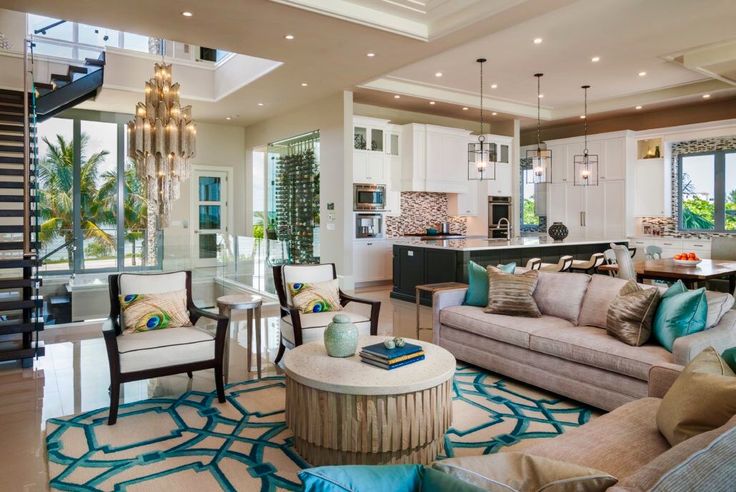How to Choose the Best Home Automation Devices for Every Room: A Comprehensive Guide
How to Choose the Best Home Automation Devices for Every Room: A Comprehensive Guide – As smart homes continue to rise in popularity, homeowners are looking for ways to make their living spaces more convenient, energy-efficient, and secure. One of the easiest ways to achieve this is by integrating home automation devices into every room. However, with the vast number of options available, choosing the right device for each room can be overwhelming. This guide will help you navigate through the best home automation devices tailored to each space in your home.
1. Living Room: Smart Lighting and Entertainment Systems
The living room is often the heart of the home where families gather for entertainment and relaxation. When automating this space, focus on devices that enhance both ambiance and convenience.
- Smart Lighting: Choose dimmable smart bulbs that allow you to control brightness and color temperature through voice commands or a smartphone app. Philips Hue and LIFX are excellent options for customizable lighting.
- Entertainment Systems: Automate your TV, speakers, and streaming services with a smart hub like Amazon Echo or Google Home. Devices like Roku or Apple TV can centralize your entertainment experience.
2. Kitchen: Smart Appliances for Efficiency
The kitchen is a prime spot for smart devices that can improve your cooking experience and energy usage.
- Smart Ovens and Refrigerators: Appliances from brands like Samsung and LG allow you to control cooking settings remotely, check the contents of your fridge, and even set reminders when food is about to expire.
- Smart Plugs and Outlets: Automating smaller appliances like coffee makers or kettles with smart plugs can make your morning routine seamless.
3. Bedroom: Smart Thermostats and Sleep Aids
Your bedroom should be a sanctuary for rest, and the right smart devices can create a perfect environment for relaxation.
- Smart Thermostats: Devices like the Nest Thermostat learn your sleep schedule and adjust the temperature accordingly for optimal comfort.
- Smart Sleep Trackers: Gadgets such as the Withings Sleep Tracker monitor your sleep patterns and provide insights to help you improve sleep quality.
4. Bathroom: Smart Mirrors and Showers
Automation in the bathroom may not be the first thing that comes to mind, but the right devices can make your morning and evening routines smoother.
- Smart Mirrors: Mirrors with integrated smart assistants like Kohler Verdera can display weather updates, your calendar, and even play music.
- Smart Showers: Brands like Moen offer smart showers that let you control water temperature and flow via an app, providing a personalized and luxurious shower experience.
5. Home Office: Smart Assistants and Power Management
With the rise of remote work, having a well-equipped and automated home office is essential for productivity.
- Voice Assistants: Amazon Echo or Google Assistant can help you manage your daily schedule, control other smart devices, and even take quick notes.
- Smart Power Strips: Manage energy consumption and remotely control devices like printers and monitors with smart power strips to save energy and prevent overloading.
6. Garage: Security and Automation Solutions
Garages are often overlooked when it comes to automation, but adding smart technology here can boost security and convenience.
- Smart Garage Door Openers: Devices like MyQ allow you to control and monitor your garage door remotely, giving you peace of mind that it’s secure.
- Smart Security Cameras: Set up a smart security system, such as Ring or Arlo, to monitor the garage and driveway, ensuring you’re alerted to any unusual activity.
7. Outdoor Spaces: Smart Garden and Lighting Solutions
Automating outdoor spaces can make your yard more enjoyable and easier to maintain.
- Smart Sprinkler Systems: Control irrigation schedules with systems like Rachio, which can adjust based on weather conditions to conserve water.
- Outdoor Smart Lights: Philips Hue offers outdoor smart lights that can be programmed to turn on at sunset or triggered by motion, enhancing both ambiance and security.
Key Considerations When Choosing Home Automation Devices
To get the most out of your home automation setup, there are a few important factors to keep in mind:
- Compatibility: Ensure that your devices are compatible with your existing home assistant (e.g., Alexa, Google Assistant, Apple HomeKit). This will allow seamless integration across your entire home.
- Ease of Use: Choose devices that are easy to install and user-friendly, especially if you’re new to home automation.
- Security: Opt for devices from reputable brands with strong security measures to protect your data and privacy.
- Cost: Budget wisely—some devices might be expensive upfront, but can save you money in the long run through energy efficiency or increased convenience.
Future Trends in Home Automation
As technology continues to evolve, so too will the options available for home automation. Here are some key trends to watch for as you plan your smart home setup:
- Artificial Intelligence (AI) Integration: AI-powered home automation systems will become increasingly sophisticated, learning user behavior to provide more personalized and proactive responses. For example, your smart home could adjust the lighting, temperature, and even suggest entertainment options based on your routine.
- Voice Control Advancements: Expect voice assistants to become more intuitive, enabling more natural conversations and commands. As voice recognition improves, users will be able to control more complex tasks using simple language.
- Interconnectivity Between Devices: The future of home automation lies in seamless interconnectivity between all your devices, across different brands. As standards like Matter—a unified connectivity protocol—gain traction, this will allow devices from different manufacturers to work together more smoothly.
- Sustainability and Energy Efficiency: More smart home devices will focus on sustainability, with enhanced energy monitoring and eco-friendly settings. Devices will be designed to minimize energy use, reducing your carbon footprint while saving money on energy bills.
- Augmented Reality (AR) for Home Automation Control: AR is set to play a bigger role in how we interact with our smart homes. Imagine pointing your phone or wearing AR glasses to visually control smart devices with a tap or gesture.
Common Mistakes to Avoid When Choosing Home Automation Devices
While home automation can provide a lot of benefits, it’s important to avoid some common pitfalls:
- Overloading the Network: Adding too many smart devices to your home without upgrading your Wi-Fi network can lead to slow response times or connectivity issues. Consider upgrading to a mesh Wi-Fi system for better coverage.
- Not Considering Future Expansion: It’s tempting to buy the most affordable device available, but not all devices are future-proof. Look for systems that allow for expansion, so you can add more devices over time without compatibility issues.
- Ignoring Security: Many homeowners overlook the importance of securing their smart devices. Always enable two-factor authentication (2FA), update device firmware regularly, and use strong, unique passwords for each smart device.
- Not Planning for Power Outages: Ensure critical systems like security cameras, alarms, and smart locks have backup power solutions in place, such as battery backups or UPS (uninterruptible power supplies).
How to Set Up and Maintain Your Smart Home
Once you’ve chosen the best home automation devices for each room, it’s time to focus on setup and maintenance to ensure your system runs smoothly.
- Centralize Your System with a Hub: Use a smart home hub or controller to manage all your devices from one place. Devices like Samsung SmartThings, Hubitat, or even just your Google Nest or Amazon Echo can act as a central point of control.
- Create Automation Routines: Maximize convenience by setting up routines or scenes. For example, you can program your smart lights to dim and your thermostat to adjust when it’s bedtime or automate your coffee machine to start brewing as soon as you wake up.
- Regularly Update Your Devices: To ensure the best performance and security, always keep your devices’ firmware updated. Many systems allow for automatic updates, so make sure this setting is enabled.
- Monitor Energy Usage: Use your smart devices’ energy tracking features to monitor usage patterns. Adjust automation settings to reduce consumption during high-energy periods or when devices are idle.
- Seek Professional Help if Needed: While most smart devices are DIY-friendly, installing a complex system or integrating devices across multiple platforms may require professional assistance. Hiring a smart home expert can ensure your setup is optimized.
Conclusion
Choosing the best home automation devices for each room can transform your living space into a smart, efficient, and comfortable environment. By focusing on the unique needs of each room, you can build a fully automated home that enhances your daily life while saving energy and boosting security. Whether you’re starting with a single smart bulb or aiming for a fully integrated system, the key is to select devices that align with your lifestyle and goals.
Incorporating these devices into your home will not only improve convenience but also add long-term value to your property.
Building a smart home doesn’t happen overnight, but with the right strategy, you can gradually introduce devices that enhance comfort, security, and efficiency. By choosing the best home automation devices for each room and staying informed on the latest trends, you can future-proof your home and enjoy the convenience of modern technology. As more devices come to market, the possibilities for home automation will only expand, making it easier than ever to create a personalized, tech-driven living experience that fits your unique needs. Whether you’re automating a single room or aiming to transform your entire home, take your time, plan carefully, and enjoy the benefits of a smarter, more connected lifestyle.






